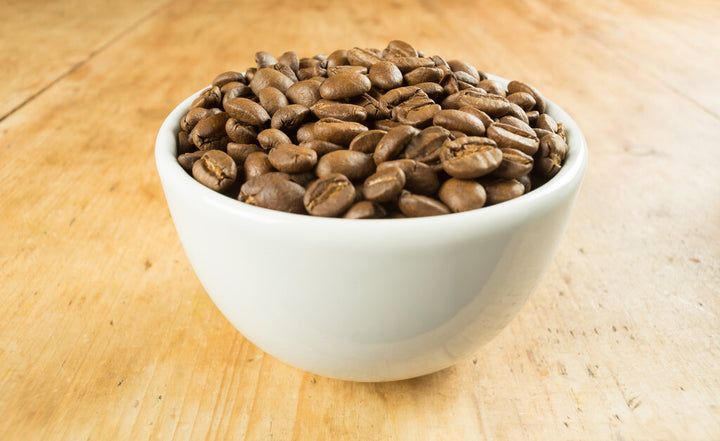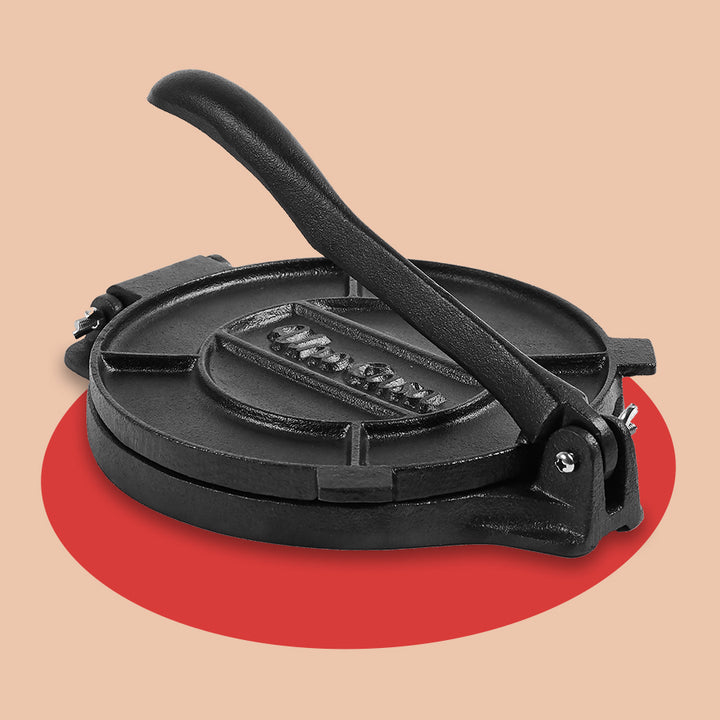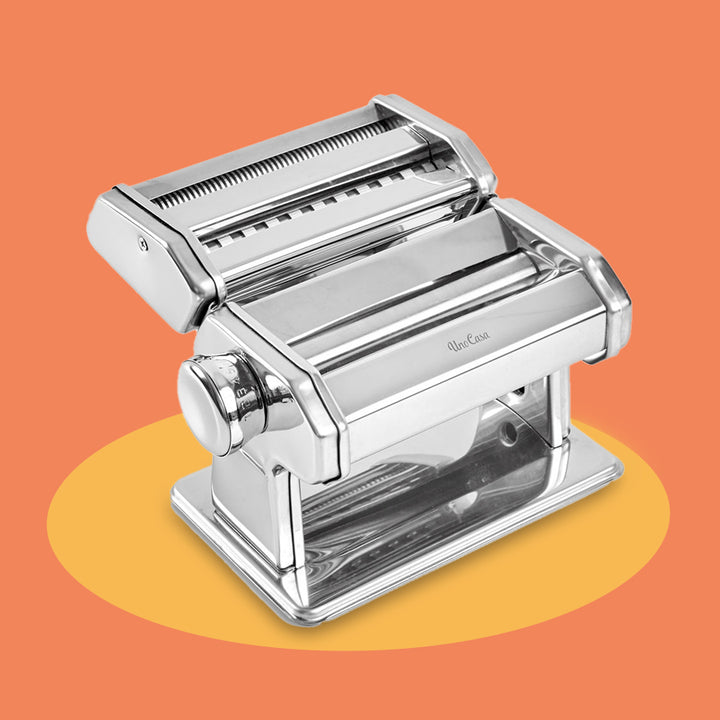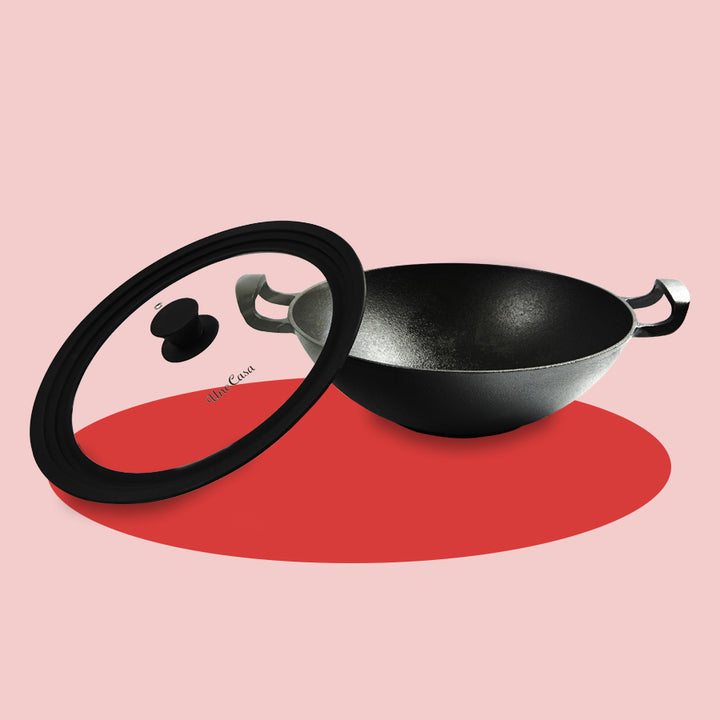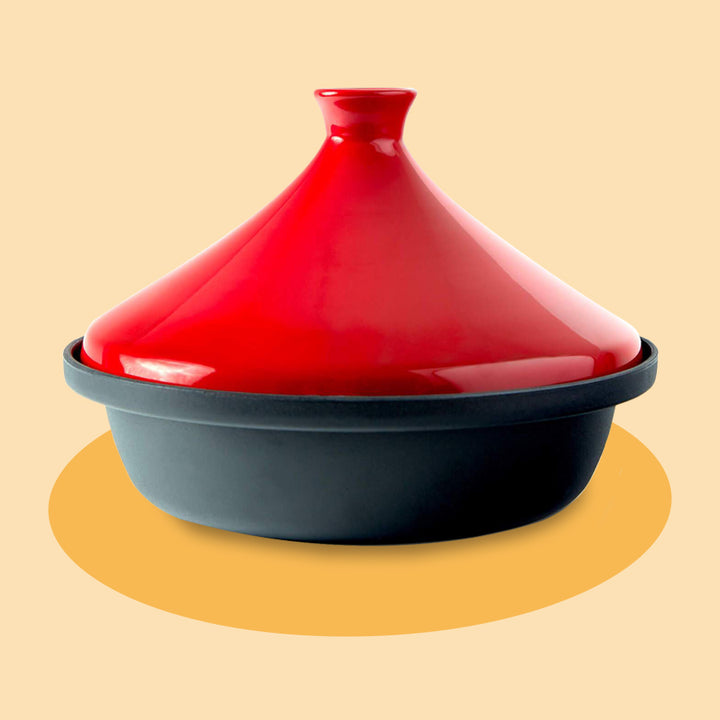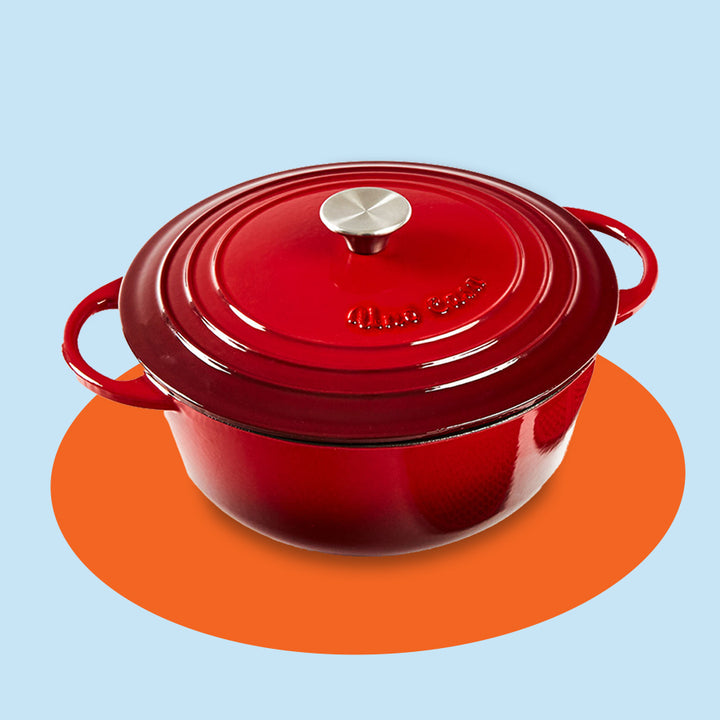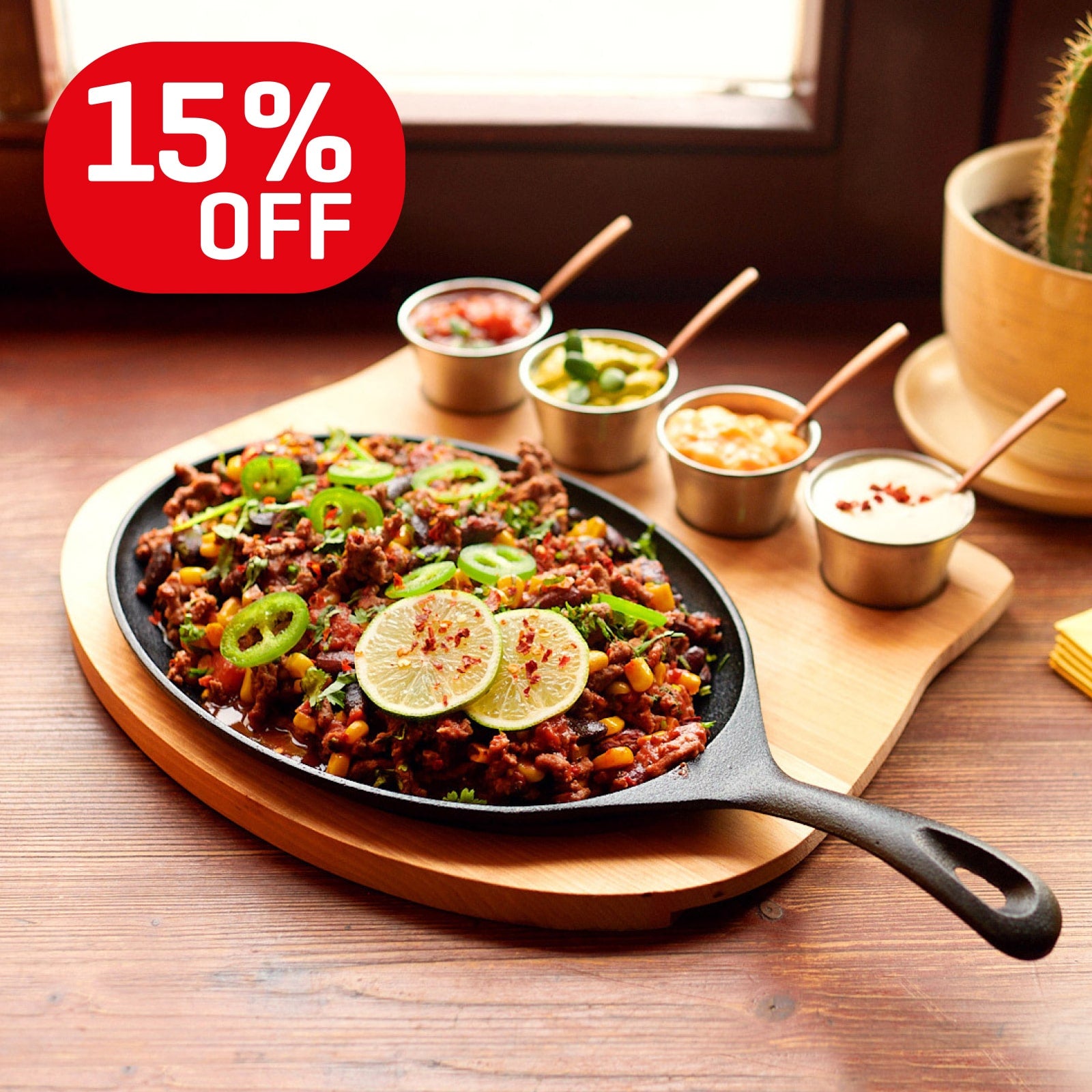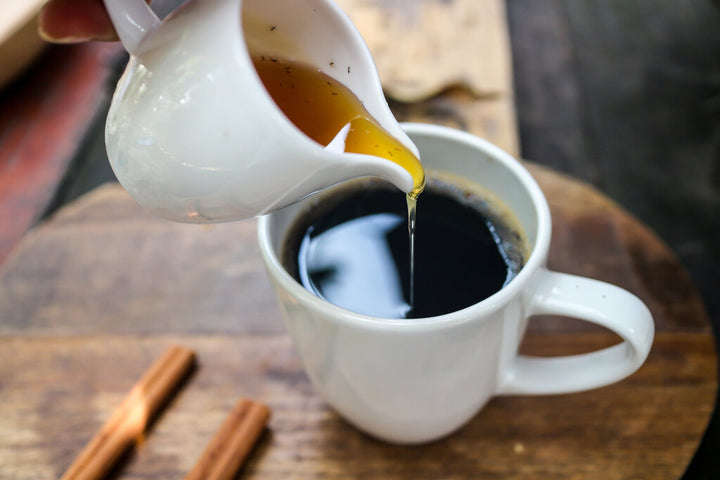How to Season a Wok For the First Time: Building a Naturally Non-Stick Coating
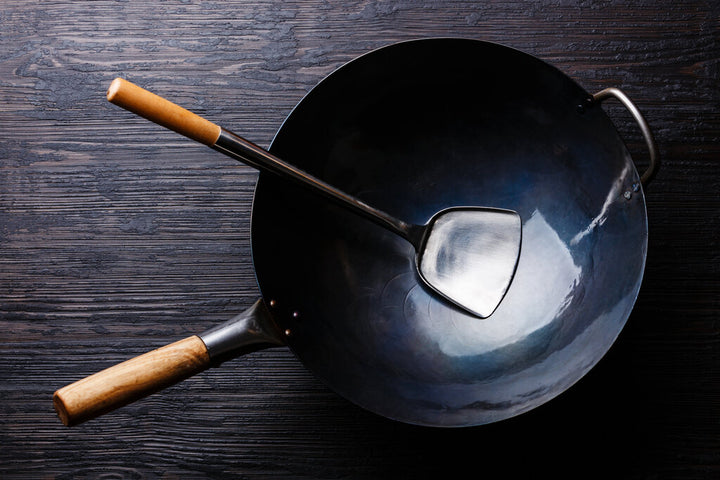
Owning a wok can make cooking over high heats and tossing stir-fries a simple task. Whether you choose carbon-steel or cast-iron for your wok of choice, it needs to be well-seasoned so that your ingredients won’t stick. Learn how to season a wok with our guide below!
These tall-sided, wide-brimmed pans may resemble a big pot, but they cook so much more than just soup – a non-stick wok is essential for cooking Asian classics like stir-fries, fried rice, and noodle dishes.
A stovetop wok is an excellent investment for your kitchen arsenal, but the carbon-steel or cast-iron types, which are by far the best options, need a little different TLC than traditional stainless steel or non-stick Teflon.
Some woks come pre-seasoned and will only require some light maintenance. If you purchase an unseasoned wok, you’ll need to build up a seasoning on your wok before you start enjoying the stir-frying glory.
Don’t believe the rumors! Seasoning and maintaining a seasoned pan is a lot easier than it seems. Follow our guide to learn how to season a wok below and some general tips for cast-iron and carbon-steel wok care.
The Importance of a Well-Seasoned Wok
We love the ease and versatility of cooking with wok pans – a well-seasoned one, at least. Like any pot or pan made of cast-iron or carbon steel, they can be a little tricky to use without a solid coat of seasoning.
Here’s what makes using a seasoned wok better than other cookware:
- Your foods will smoothly glide along the cooking surface without sticking and crumbling or falling apart.
- You can reduce the oil used in each dish, as you’ll only need minimal cooking oil thanks to the handy seasoning.
- A well-built seasoning can add some deliciously intense flavors to each meal.
What Happens if You Use an Unseasoned Wok?
If you attempt to use an unseasoned wok, you’re going to need to add a ton of oil to prevent burning at the high temperatures necessary for wok cooking. Oil is very high in calories, and with 120 calories per tablespoon, it can turn a healthy meal bad quickly with just a few extra drizzles.
At worst, your ingredients won’t even make it onto your plate – they’re going to be stuck like glue to your wok instead.
Using unseasoned cast-iron and carbon-steel to cook can also cause rusting and corrosion of the materials, which can completely ruin your wok. This is why it’s worth taking the time to learn how to season a wok for yourself.
Pre-Seasoned Options
While seasoning your nonstick wok isn’t all that tedious, it is a little time-consuming. If you’re not interested in doing the initial seasoning on your pan, there are plenty of options that come pre-seasoned straight from the factory.
For example, we love this cast iron wok! The seasoning on this pan is machine-made, so it’s likely a little smoother than the one you’ll make at home.
A homemade seasoning will make your food taste better, whereas a factory seasoning won’t impart any flavor, but look at it as a jumping-off point. As you use your pre-seasoned wok for cooking, your seasoning will improve every time and become a better flavor builder.
You still don’t want to use a factory-seasoned wok straight out of the box, as it picks up dust, dirt, and oils in the factory and shipping journey.
Give it an easy wash with some mild soap and hot water to remove any residues before you get to cooking in your shiny, new wok.
How to Season a New Wok: Step-By-Step Instruction
The Initial Seasoning Process
When you season a wok, it’s not a one-and-done process. This initial seasoning process makes your wok smooth enough to cook with, but at first, the seasoning won’t be as strong and well-built as a mature seasoning that has years to build up.
You’ll still need to use a bit more oil at first, which helps maintain and build your seasoning with every single use. After a year of weekly use, you will see your wok coating become darker and smoother. The wok will require less and less oil over time – a nicely seasoned wok may need no oil at all.
Step #1: Gather Your Ingredients
It might seem silly, but there is even a “recipe” for seasoning carbon-steel pans and cast-iron woks, and you’ll need a few ingredients to help the process along!
Seasoning Ingredients & Equipment
- 1 bunch green onions, sliced into 2-inch pieces
- 1/2 c. unpeeled ginger, sliced
- 2 Tbsp grapeseed, canola, or peanut oil
- Your wok (of course!)
- Stainless steel scrubbing pad
- Mild liquid dish soap
- Spatula
Step #2: Wash and Dry the Wok
Use hot water and a light dish soap to scrub the factory residue and oil coating away from the surface. You can only use a steel scrubbing pad on the surface before you season cast-iron wok surfaces because there is no seasoning to disturb yet. Rinse your wok.
Next, place your clean wok on a stovetop burner over low heat, and let it dry for 1-2 mins to remove any extra moisture. Your unseasoned wok is exceptionally prone to rust and needs to be fully dry while it’s in this vulnerable state.
Step #3: Prepare the Kitchen
If you can open the kitchen windows, now is the time. This process can get stinky, and some chemicals leftover from the factory oils may enter the air.
Set your ingredients beside the stovetop along with a small bowl of tap water.
Step #4: Heat the Wok
Set your wok on the highest heat burner on your stove, and turn it to its highest setting.
Wait 30 secs, then start dropping a splash of water onto the wok to test the heat. The wok is ready to go when a water bead evaporates in 1-2 secs after contact. If the water won’t evaporate but rapidly rolls around the pan, it’s also a sign that it’s go-time.
Step #5: Add the Oil and Cook the Ingredients
Once your wok is hot, take the pan off the burner and add 2 Tbsp of your cooking oil. Swirl the wok to lightly coat the bottom and sides thoroughly.
Place your oiled pan back on the heat and add the green onions and sliced ginger. Reduce the heat to medium, and stir-fry your wok ingredients for 15-20 mins, ensuring you cook them along the bottom of the wok as well as up the sides to season carbon-steel wok surfaces thoroughly.
If the mixture dries out, add another Tbsp of oil as necessary.
Watch the color of the wok change from silver to a slightly yellow-brown hue, or in the case of cast-iron, watch the black surface darken slightly.
Step #6: Remove, Cool & Clean the Wok
Remove your wok from the heat and let it cool completely. Wash the wok with hot water only, no soap.
Once again, place the wok over low heat on the stovetop and allow it to dry for 1-2 mins.
How to Season a Carbon-Steel Wok
You can use the steps above to season a carbon-steel wok precisely as written.
How to Season a Cast-Iron Wok
While you can use the steps above to season a cast-iron wok, beware that the pores in cast-iron are much deeper than those in carbon-steel and can be pretty sticky at first.
You may need to repeat the initial seasoning process a few times before use, starting at Step #3 and moving on as instructed.
General Wok Care: Maintaining Your Precious Wok Seasoning!
Feed your new wok loads of fatty, flavorful oils and foods like bacon, helping build your non-stick seasoning while infusing it with the most delicious flavors.
Stay away from steaming, boiling, or cooking overly-acidic foods, like tomatoes, in your wok for the first little while, as your new seasoning is still more delicate than well-built seasoning.
As the patina and seasoning build within your wok, the seasoning might look spotty or feel uneven. Don’t worry; this is normal! Leave your season to build, and it will smooth out over time.
Final Note: Cleaning Wok After Each Use
Knowing how clean wok properly is as important as seasoning. Contrary to popular belief, you can use a mild soap to clean your wok and hot water, but you’ll want to avoid using any metal tools to clean it, as the seasoning can be disturbed or removed.
Don’t leave your wok to soak in hot water and be sure to remove it from the sink immediately after washing. Place your wok on low heat to dry on the stove with a thin coating of oil, then store until your wok is ready for its next use!
Leave a comment
Comments will be approved before showing up.
Also in Tips
